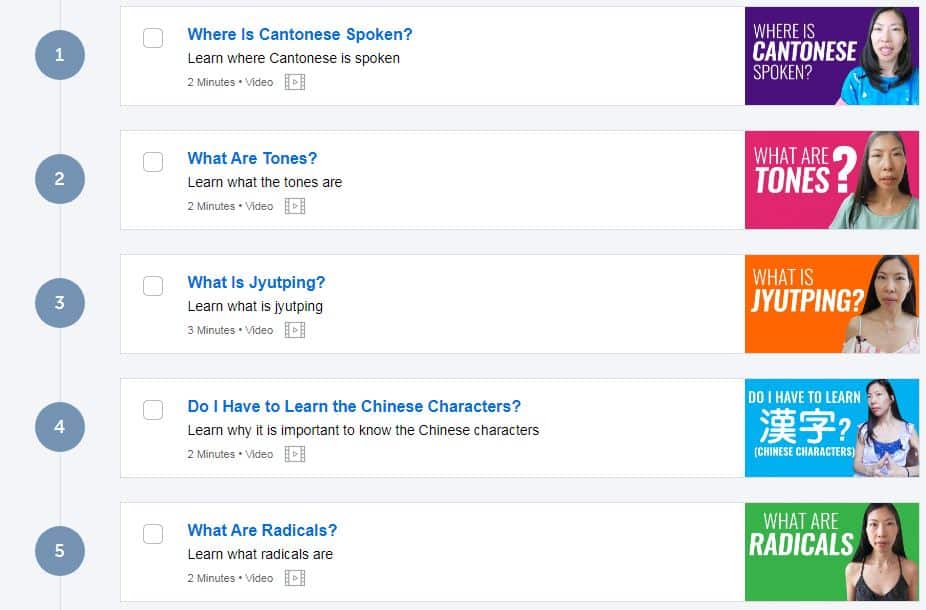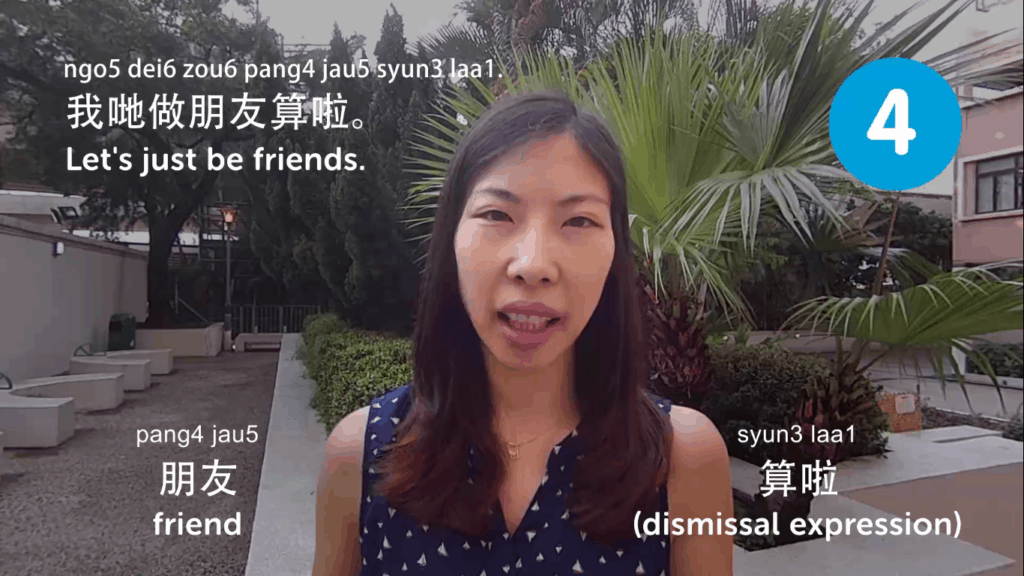Editor’s Note: This CantoneseClass101 Review has been updated with new information on Oct 18th, 2021. There are referral links in this review, however please rest assured that we only recommend products that we actually use and believe in.
Cantonese is a Chinese language which is widely spoken in Southern China, Hong Kong, Malaysia, and Singapore. Even though it’s second to Mandarin in terms of number of speakers, its usefulness in business remains high.
There are plenty of options out there for learning Cantonese online, and CantoneseClass101 is one of the more popular options.
After extensively testing CantoneseClass101 these past weeks, as well as testing their main competitors, I feel confident to give my opinion on how this program stacks up.
Read on to find out!

CantoneseClass101 Review: Summary

Overall Score: 4.1
The Goods
- Systematic lessons that begin with absolute beginner skill level
- Topics are fun, interesting, and relevant to today’s culture
- Uses proven methods to improve specific language skills
- Many interactive tools and quizzes are available to enhance learning
- Immersive and efficient for beginner to intermediate speakers
The Bads
- Advanced speakers may find materials helpful to brush up on fluency but lacking in resources to add to their existing level
- We’d like to see a more structured organisation of all the content that ties together all the new vocab and grammar points
- Lack the time or motivation for learning Japanese
What is CantoneseClass101?
Innovative Language, the company that originally started with just JapanesePod101 have created CantoneseClass101: an extensive library of podcasts, videos, flashcards, quizzes, and mobile apps to assist motivated individuals to learn how to speak, read and write Cantonese. The level of fluency you want to reach, from knowing key introductory phrases for casual use right up to complete fluency, is totally up to you.
Signing up for CantoneseClass101 gets you a free lifetime account, which gives you access to common word lists, hundreds of audio and video lessons, and an extensive suite of learning tools. You can upgrade to one of three monthly subscriptions for access to the entire library of lessons, personal and interactive lesson quizzes, and even one-on-one instruction.
CantoneseClass101 Features
- Relevant and regularly updated lessons
- Lessons that are structured and ordered to best teach you the language
- Vocabulary lists for a variety of words relevant to today’s cultures
CantoneseClass101 is a language learning program that lets you learn at your own pace on your own time. If you need more practice on a lesson, you can simply take it again. All of the monthly subscription plans include access to apps for your Android or iOS device. This means that you can turn your lunch break, commuting time, or even a workout into a productive learning time.
The Pros: What We Liked About CantoneseClass101
Here are a few positive points that stood out to us while using the program:
Pro #1: Structured Lessons for Optimal Learning
CantoneseClass101 teaches you how to speak Cantonese in a deliberate way, so you get the most out of your lessons. Within a pathway, each lesson builds upon what you’ve previously learnt. With access to these classes at your fingertips anytime of the day, you can review the lessons as many times as you need until you have it down before moving on to your next chapter.
Pro #2: Native Speakers
Native Cantonese speakers teach all the lessons and provide one-on-one instruction with the PremiumPLUS subscription. This is a huge benefit when trying to learn proper tones and inflections. Cantonese (or Lingnan) culture is spread throughout the lessons to further enhance your immersion in the language.

Pro #3: Level-Appropriate Content & Flexible Learning
There are five skill levels: Absolute Beginner, Beginner, Intermediate, Upper Intermediate and Advanced. Each level corresponds roughly to the standard CEFR language framework with Absolute Beginner equating to A1, Beginner A2, and so on. You can go from one level to another at any time, as you feel ready. In fact, the entire syllabus is completely customizable, meaning that you have complete control over what topics and content you choose to study.
The program works by allowing you to browse hundreds of possible learning pathways before deciding on one and selecting ‘add to dashboard’, which saves the pathway to the main dashboard where you can track your progress and get further lesson recommendations. This way you can really take your learning into your own hands, focus on the skills & language points you need most, and stay motivated by constantly discovering new and interesting topics to learn.

Pro #4: On-the-go Downloadable Content
The podcasts are easily downloaded along with the lesson notes, transcripts and lesson checklists for easy learning whenever you find yourself without wifi. The mobile apps and vocab tools are also available offline, allowing you to take your learning anywhere you go, and study completely at your own pace.
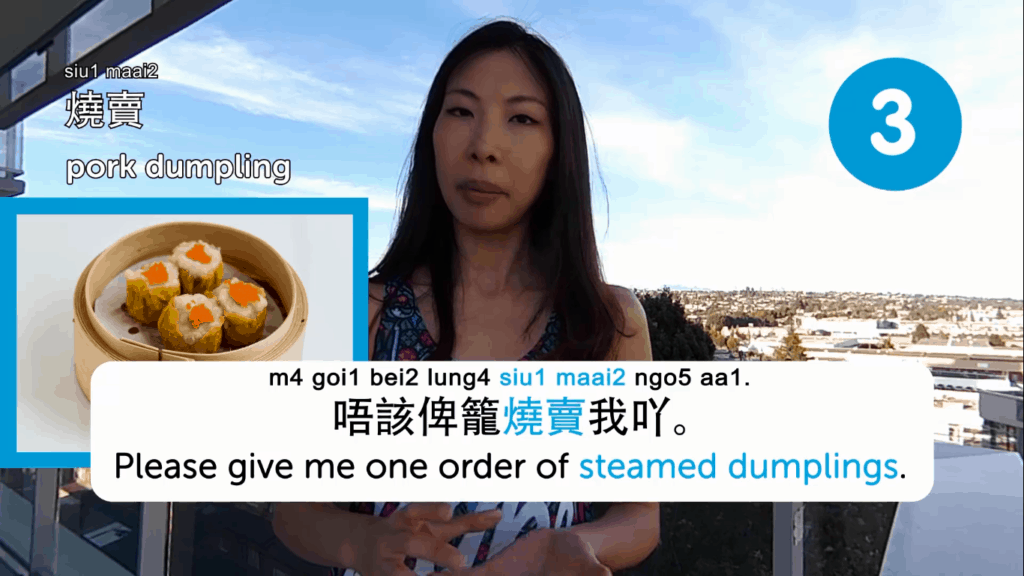
The Cons: What We Didn't Like About CantoneseClass101
Every language learning program has its flaws. Here’s what we thought could use some improvement:
Con #1: Structure can be confusing
Since the whole program is based upon the concept of customizable modular lesson ‘pathways’, there’s not much of an overall structure that you’d expect from a traditional language program or textbook. Instead you are expected to piece together your own learning as you go along, with the grammar points and vocabulary being fed to you in chunks here and there.
Con #2: Online Community is Lacking
The online community of those learning to speak Cantonese is small, so you may find that you need an external source for conversation practice. We recommend using a site such as italki to find yourself a native Cantonese language tutor for speaking practice. Practicing what you’ve learnt so far in the course alongside learning new content would be an ideal situation. It’ll also boost your motivation and give you a chance to clarify any questions you might have.
Whilst this methodology does give you lots of flexibility it can feel very disjointed without a clear logical path to follow. If you’re not suited to independent learning, then you might struggle to stay motivated. That being said, for every level there is a recommended curated pathway that you should begin with, though the quality does vary and some of the other pathways are often a better option.
What are the Lessons Like?
As mentioned, there are five skill levels from which to choose.
As an Absolute Beginner, you will start out learning how to speak Cantonese with an introduction to pronunciation, grammar, and writing. By the end of your first lesson, you will have covered question formation and basic introductions/greetings.
Beginner and Intermediate skill levels will build on the solid foundation you gain as an Absolute Beginner with lessons about past tenses, lengths of time, directions, and calling for help.

Intermediate lessons center around some interesting topics such as living in Hong Kong, getting a job, banking, etiquette, and ‘hogging the limelight’.
As an Advanced learner, you will flex your fluency with lessons about various Hong Kong movies, tourist locales, and purchasing tickets. The native teachers speak slowly and enunciate clearly so that you can keep up. With culture notes intertwined into each lesson, you gain fluency in Cantonese as well as a deeper knowledge of the country.
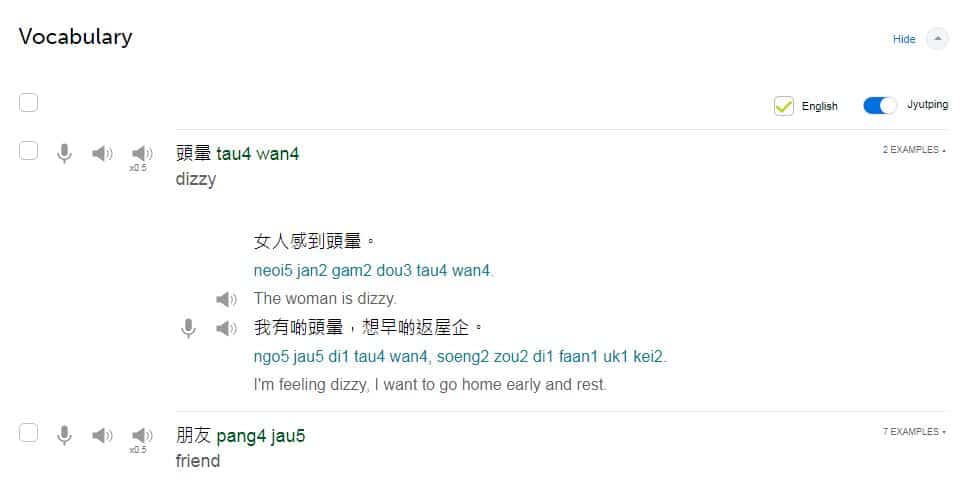
The lessons in every level are usually structured the same way. You are first encouraged to listen to the podcast or watch the video several times. There’s often an authentic dialogue to expose you to the target language that’s being taught in context. At this point you should just do your best to listen to the pronunciation, even if you don’t understand everything.
Next, you can read along with the transcript, with the added option to listen again to the line-by-line audio recordings. You can also click on the microphone icon to record your own voice and compare your pronunciation alongside the native speaker. Finally, you can read through the list of vocabulary, the lesson notes and grammar bank. The entire process is explained in a checklist that can be downloaded with each lesson. Note, the lesson notes, transcripts and mp3 files are also easily downloaded within each lesson.
Extra Learning Tools
The Innovative Language programs are well known for their additional learning tools and interactive features that accompany the lessons. CantoneseClass101 is no exception – there’s a whole suite of useful tools on offer to enhance your learning.
For example, one of the most useful features is the word bank and spaced repetition flashcard decks. At any point during the lessons you can save a word into either your word bank or a given flash card deck. Within your word bank you can categorise all your words with labels, and import them into a specific flashcard deck. You can select from premade flashcard decks or create your own from scratch. This way you’ll never lose a word during a lesson, and you’ll be able to track every vocab term you encounter.

Additionally, you’ll find that there’s 100s of vocab lists to explore on a massive range of trending topics from money-related expressions to chat up lines. A great way to break up your learning and build upon your existing vocab knowledge. Likewise, there’s a list of the 2000 most common words in Cantonese. This allows you to focus on only the most relevant language and avoid wasting your time on words or expressions that are obsolete or outdated. Every word comes with a pronunciation guide and at least one example sentence. The list can also be filtered by category and narrowed down to the most common 100, 200, 300 words etc.
Who Should Use CantoneseClass101?
Those who want to learn Cantonese will definitely benefit from using CantoneseClass101, especially those who:
- Plan to do business in Hong Kong or Southern China
- Are planning a trip to Hong Kong or other Cantonese-speaking areas
- Love Cantonese language, culture, songs, or movies
- Have a Cantonese partner, family member, or friend
- Are motivated and thrive on independent study
Who Shouldn’t Use CantoneseClass101?
As with all language learning programs, a proper fit is essential for optimal learning. Those who might not benefit from CantoneseClass101 include:
- People who need one-on-one instruction
- Those who prefer a one-track syllabus over independent learning
- Those who lack the motivation to dedicate time to learning
- Fluent speakers looking to delve deeper into the language
Best CantoneseClass101 Alternatives
While it is easy to find loads of apps and programs that claim to teach you to speak Cantonese, few can provide in-depth lessons. Many free Cantonese apps and programs we tried like Duolingo and Wikihow do not cover much grammar, tone, or pronunciation, leaving you with a glorified translation dictionary. The few Cantonese courses we found and how they measure up to CantoneseClass101 is detailed below.
CantoneseClass101 vs. Learn Cantonese Sheik
This UK-based website is free to use, but you can also make a donation of your choice for access to customized quizzes, expanded vocabulary lists, and access to learning tools. Free accounts are subject to advertisements. Sheik appears to have an extensive library of lessons, but it mostly consists of forum posts by other members.
There is no clear cut starting point, which only leaves one to guess where to begin.
CantoneseClass101 vs. Cantolounge
Cantolounge is run by Hong Kong natives based in Canada. You can download the excellent 127-page “The Complete Guide to Learn Cantonese” PDF for free, which covers what it takes to learn the language. You will also find grammar lessons via videos, vocabulary lists, and transcripts. Also available is a Jyutping chart with over 1500 recordings for pronunciation practice.
Similar to the Sheik program, there is not a clear starting point for beginners, and it’s possible to get lost amongst the abundance of information. That said, as a free resource, this is probably your best bet.
Though lacking the comprehensive lessons of CantoneseClass101, Cantolounge could be beneficial as a supplemental learning program.
Is CantoneseClass101 Worth the Money?
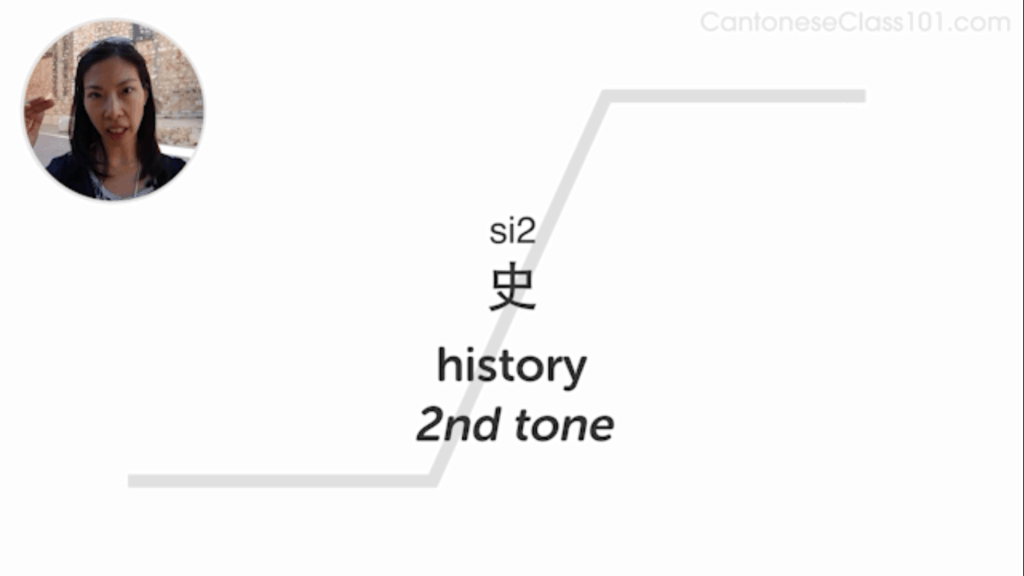
We think that a person who is serious about learning Cantonese is making a good investment with CantoneseClass101. The lessons, even with the free account, are some of the most informative and engaging that you’ll find.
It’s clear that the CantoneseClass team has invested thousands of hours into creating the most comprehensive course out there. And they continue to improve and add new lessons every week.
While the basic membership starts at only $4 a month, I’d really recommend the premium option ($10 per month) for the additional vocab tools that will be of great benefit if used properly, whilst still being cost effective. We reached out to the CantoneseClass101 team who have kindly offered our readers 30% off their subscriptions.
One-Time Payment Lifetime Membership Option
If you’re like me and you don’t like paying for something every month, there’s a secret lifetime membership option that might be for you.
If you’re serious about learning long-term, this might be your best option.
Better yet, if you’re learning multiple languages, Innovative Languages (the team behind the Pod101 and Class101 programs) offers lifetime access to ALL 34 languages. Mind you, it’s not cheap. But if you think long-term and realize that you’ll get a ton of use out of all the different languages over the years to come, it’s a really good deal.
Final Thoughts on CantoneseClass101
We find CantoneseClass101 essential for anyone seeking fluency in Cantonese. Those who are simply looking to learn useful phrases for upcoming business or leisure trips to Hong Kong will benefit greatly from the orderly, progressive lessons.
CantoneseClass101 is the best option we know of for learning Cantonese. It’s one of the only programs we found to offer multiple ways to learn on your own time. The website and apps are easy to navigate and you can concieniently keep track of your progress and where you left off. CantoneseClass101 is an essential program for any serious student.
Michael has lived in Japan on and off for almost 10 years. He loves studying Japanese, and is currently working on going from N2 to N1 on the JLPT.

